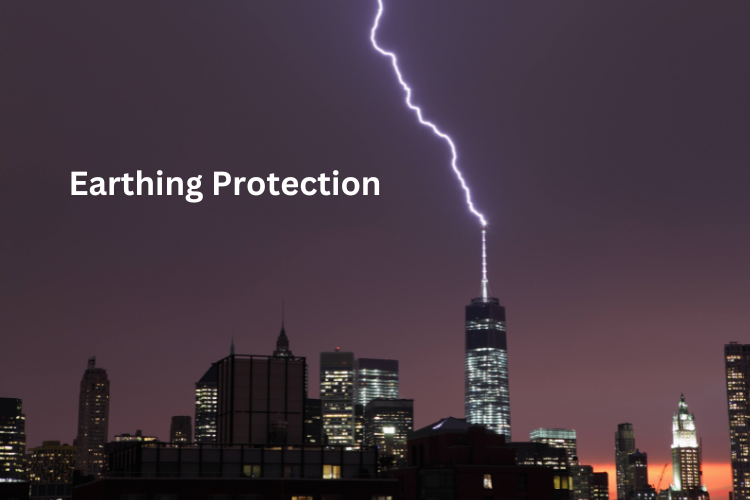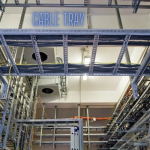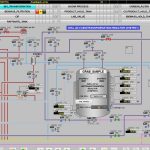Which are the different types of earthing systems?
Sure! You’re at the right place. Because for your all queries we have the best solutions. We supply GI Electrodes, GI pipes, GI pipes in Pipe Electrode, and GI, and we customize these products to meet the needs of our customers.
There are three types of earthing, they are:
- Pipe earthing.
- Plate earthing.
- Strip earthing.
The fault current from the equipment travels through the earthing system when the equipment is subjected to an overload current or when a system fault results from the current. The earth mat conductors assist protect the equipment from overload current or fault current by increasing the voltage value equal to the earth mat’s resistance times a ground fault.
There must be three different wire kinds in homes: live, neutral, and earth. The ground is connected to the buried metal plate and live and neutral conduct electric current from the power plant. When in use, electric appliances like TVs, iron boxes, and refrigerators are all connected to the ground wire. As a result, these gadgets are shielded from surges or poor electrical supplies. Near the house’s electrical meter, local earthing is performed.
Varieties of Earthing:
There are three different types of earthing.
- Pipe ionization
- plate irradiation
- The strip earthing
The best and most effective method of earthing is pipe earthing, which is also fairly inexpensive. Pipe earthing uses vertically buried, 38mm-diameter, 2-meter-long pipes to serve as earth electrodes. An earthing plate consisting of copper or G.I. is buried into the ground during plate earthing at a depth greater than 3 meters below ground level. A different layer of coke and salts surrounds this earthing plate.
Processes for transmission use strip earthing. Strip electrodes with cross sections no less than 25mm X 1.6mm in copper, 25mm X 4mm in G.I. or steel, or 25mm X 0.5mm in steel are buried in horizontal trenches.
Benefits of Earthing The safest and most effective way to provide safety is through earthing. We are aware that the planet has no potential and is considered neutral. Balancing is accomplished because low resistance wire is used to link low equipment to the earth. Metal can be utilized in electrical installations without considering its conductivity because it won’t transfer current if it is properly earthed. If sufficient earthing precautions are taken, a sudden increase in voltage or overload has no negative effects on the object or the user. It reduces the possibility of fire dangers that the current leakage may otherwise bring about.
Why Earthing is Important?
The main goal of earthing is to prevent or reduce the risk of electrocution, and fire, and to make sure that the potential of a current-carrying conductor does not increase with regard to the earth beyond its intended insulation.
When an electrical appliance’s metallic components—those that may conduct or permit the passage of electric current—come into touch with a live wire, sometimes as a result of improper installation or inadequate cable insulation, the metal becomes charged, and static charge builds up on it. Such a charged metal will shock someone who touches it severely. The power supply systems and component parts of appliances must be earthed in order to transmit the charge to the earth in order to prevent such occurrences. For this reason, electrical installation systems require electrical earthing or grounding.
Here are the fundamental requirements for earthing. to safeguard electrical equipment and appliances from leakage current and to safeguard human lives. to maintain a steady voltage in the healthy phase (If a fault occurs on any one phase). to safeguard the electric system and structures against lightning. to act as a return conductor in a communication and traction system for electric vehicles. to reduce the possibility of fire in systems for electrical installation.
Points to be Earthed
The earth pin of 4-pin power plugs and 3-pin lighting plug sockets should be effectively and permanently earthed. All metallic casing or covers, such as GI pipes and conduits housing VIR or PVC cables, iron-clad switches, iron-clad distribution fuse boards, etc., that contain or protect any electric supply line or device should be earthed (connected to the earth). Every generator’s frame, as well as any stationary motors and metallic components of transformers used to manage electricity, should be earthed using two unique yet separate connections to the earth. The middle wires of a 3-wire DC system ought to be grounded at the producing station. Overhead stay wires for lines should be grounded by attaching at least one strand to the earth wires.
Earth Wire or Earth Continuity Conductor
The component of the earthing system known as earth wire or earth continuity conductor, as shown in the above illustration, connects the overall metallic parts of the electrical installation, such as conduit, ducts, boxes, metallic shells of the switches, distribution boards, Switches, fuses, Regulating and controlling devices, metallic parts of electrical machines like motors, generators, and transformers, and the metallic framework where electrical devices and components are installed. The resistance of the earth continuity conductor is quite low. The resistance between the consumer earth terminal and the earth continuity conductor (at the end) should not be greater than 1, as per IEEE guidelines. Simply said, the earth wire’s resistance should be less than 1.
Earthing for Houses – Types & Methods of Earthing
A crucial discovery for humanity was electricity. Electricity has a significant role in every aspect of our life, from the most basic needs to the most beautiful designs. Appliance types have seen a number of technological breakthroughs, and this number keeps rising daily. Man, electricity’s master, was the reason it was created. However, there has been an odd and unwelcome role reversal due to the current situation, which includes numerous accidents and a lack of prevention. If a 5 milliamp electric current is passed through the human body quickly, there is a probability that it will suffer significant harm.
Why is Earthing required for Houses?
Ensuring that all equipment being used by building inhabitants is at Earth Potential, protecting them from electric shocks caused by direct contact to safeguard electrical equipment from being harmed by strong currents along electrical lines to maintain constant voltages in three-phase circuits even when the load status is unstable To prevent damage from lightning to towering buildings.
Benefits of Earthing
We are aware that the present moves from a prospective difference. Any electrical device or line that has been connected to the earth is currently operating at zero volts. Any time there is an overflow of current, electrical energy is immediately discharged to the earth without endangering the user or the equipment. If an appliance is earthed, it is still safe to use even if its insulation fails.
- We specialize in the supply and testing of highly conductive, corrosion-free Earthing systems.
- Approved Earthing Includes:
a. Low Electrical resistance
b. Ability to conduct stable voltage, even at weather changes.
c. Long Life Expectancy: high resistance against corrosionOur Product Range is:
1. Maintenance-free Chemical Pipe Earthing Electrode (GI, Copper, Copper Bonded)
2. All Earthing Accessories Back Fill Compound, GI/CU Earthing Strips
For more information and inquiries feel free to contact: kirti@iengaust.com.au & shila@iengaust.com.au




